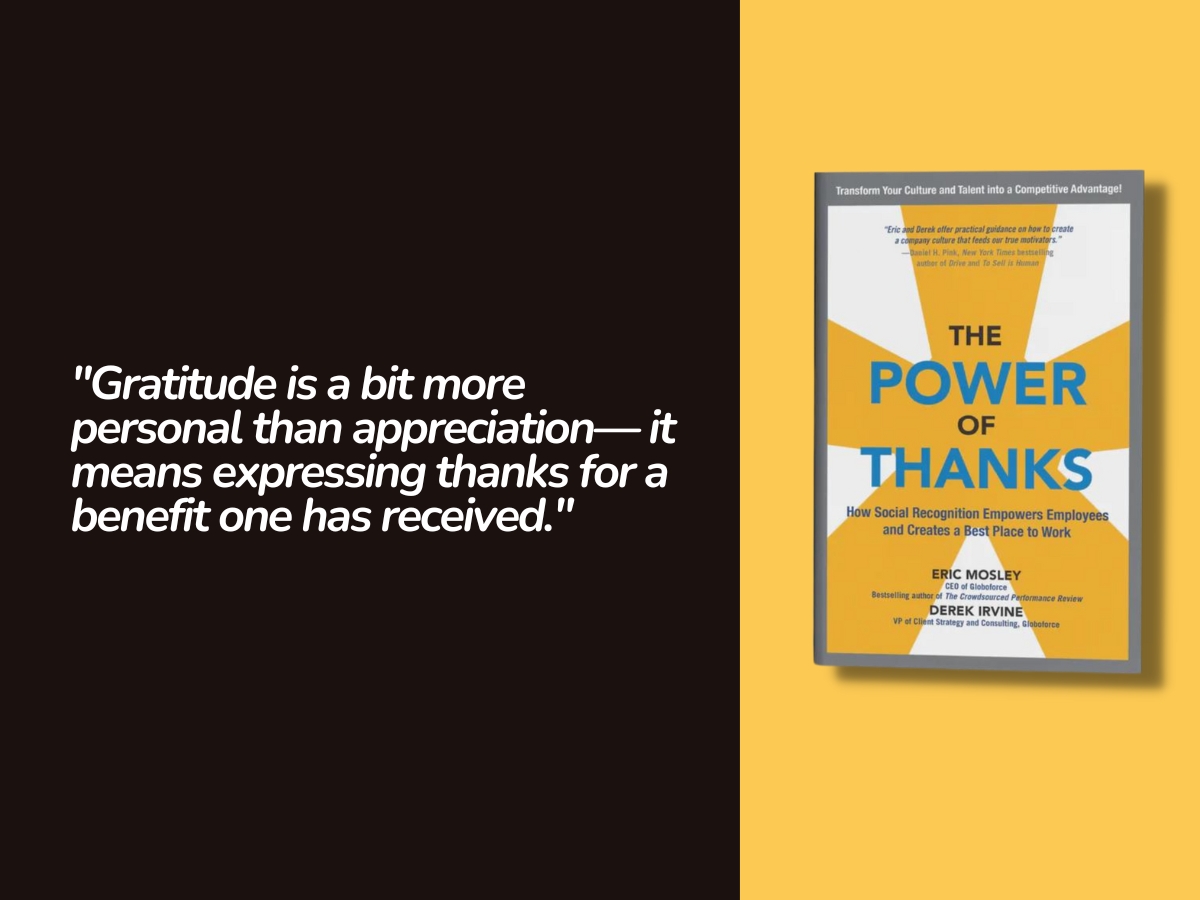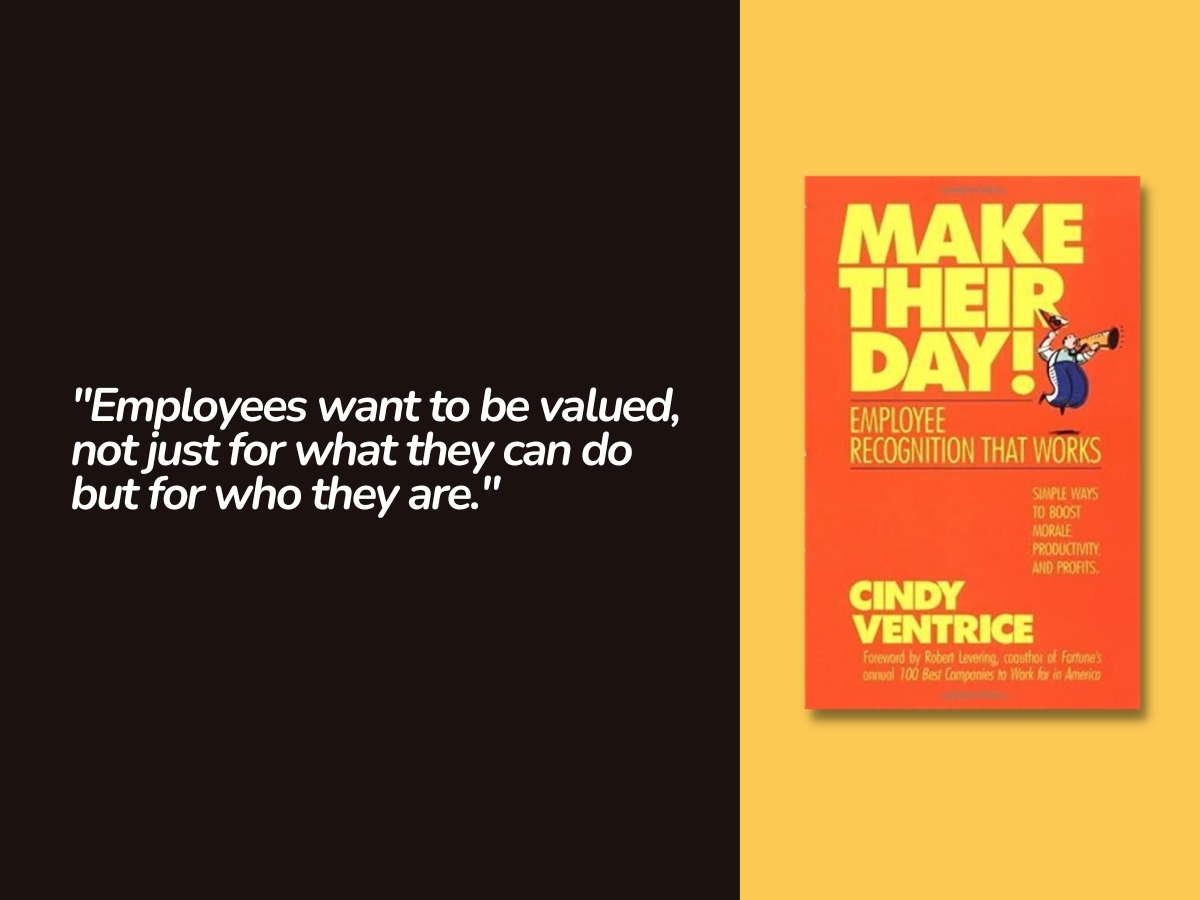Employee recognition is one of the most important aspects of building a cohesive, productive, and effective team. It sends a powerful message to your employees, letting them know that their hard work is noticed and valued. It’s also a major motivator for employees to do better, perform better, and strive for better.
In this blog post, we’ll take a look at some of the must-read employee recognition books.
Here are the books that we recommend reading:
- The Power Of Thanks
- The 5 Languages Of Appreciation In The Workplace
- 1001 Ways To Reward And Motivate Employees
- The Carrot Principle
- Make Their Day
Books are a powerful tool that can be used to both learn and get inspired. Therefore we have decided to start creating book series of our recommendations. Keep reading to learn more!
The Power of Thanks

In “The Power of Thanks,” Eric Mosley and Derek Irvine explore the power of social recognition in the workplace. They argue that traditional recognition programs that focus only on top performers are not enough. They propose a more inclusive approach. “The social recognition journey” is a three-step process: tactical, enterprise, and strategic recognition.
Success happens when companies invest in structured and data-driven programs. Recognition is not just a nice-to-have, but an essential element of any company culture that can drive competitive advantage. It is a must-read for anyone looking to improve employee engagement, motivation, and performance.
Mosley and Irvine emphasize that by acknowledging the efforts and achievements of all employees, not just the top performers, companies can foster a more positive and collaborative work environment. This comprehensive strategy can lead to higher job satisfaction, lower turnover rates, and ultimately, greater overall success for the organization.
The 5 Languages of Appreciation in the Workplace

The book “The 5 Languages of Appreciation in the Workplace” by Gary Chapman and Paul White, is a guide to understanding the different ways employees prefer to be recognized. The book suggests that there are five primary languages of appreciation in the workplace: Words of Affirmation, Quality Time, Physical Touch, Acts of Service, and Tangible Gifts.
The authors argue that it’s important for managers and leaders to understand the language of appreciation that speaks the most to their employees, and use that language to show appreciation and recognition. The book provides practical examples of how to use each of the five languages, and emphasizes the importance of tailoring recognition efforts to the individual needs of employees.
The book also suggests that by understanding and speaking the language of appreciation that speaks to each employee, companies can improve employee engagement and motivation, and create a more positive work culture. Chapman and White highlight the transformative power of personalized recognition in enhancing team dynamics and strengthening the employee-manager relationship.
They underscore that when appreciation is expressed in a way that resonates with an individual’s preferred language, it not only uplifts the recipient but also bolsters a culture of respect and gratitude across the organization. This approach not only elevates employee morale but also contributes to higher retention rates and a more vibrant, committed workforce.
1001 Ways to Reward and Motivate Employees

“1001 Ideas to Reward and Motivate Employees” by Bob Nelson is a guide to creating effective recognition and reward programs in the workplace. It provides a wide range of ideas and strategies for recognizing and motivating employees. Covering everything from simple, low-cost options to more elaborate rewards.
Encourages managers to think creatively and come up with unique ways to show appreciation. And highlights the importance of involving employees in the process. Provides tips on measuring the success of recognition programs and communicating them effectively to employees. Aimed at managers and leaders looking to improve employee engagement and motivation, providing a wealth of ideas and inspiration for creating effective recognition programs.
Nelson’s book serves as a comprehensive resource for developing impactful and meaningful recognition strategies that resonate with employees. It emphasizes the critical role of recognition in building a positive workplace culture where employees feel valued and inspired. By incorporating feedback and preferences from the team, managers can tailor recognition efforts to match the diverse needs and motivations of their workforce.
This personalized approach not only enhances employee satisfaction but also drives higher levels of performance and commitment to the organization. Nelson’s guide is an invaluable tool for any leader striving to foster an environment of appreciation and motivation.
The Carrot Principle

“The Carrot Principle” is a game-changer of a book for managers and leaders who want to build a culture of appreciation and recognition in their workplace. Written by Adrian Gostick and Chester Elton, this book delves into the power of recognition and how it can drive employee engagement, motivation and performance.
It’s packed with real-life examples and practical tips on how to design and implement an effective recognition program that aligns with organizational goals. This book not only shows you the why but also the how of recognition. It emphasizes that recognition should be a consistent and ongoing process and not just a one-time event.
“The Carrot Principle” highlights the undeniable link between consistent recognition and the overall success of an organization. Gostick and Elton effectively argue that recognition goes beyond mere rewards. It is serving as a fundamental pillar for cultivating a vibrant, engaged workforce. These authors empower leaders to create an environment where appreciation is woven into the fabric of the company culture.
And then this approach not only boosts morale and motivation but also enhances loyalty and performance across teams. For anyone aiming to elevate their leadership and organizational culture, “The Carrot Principle” offers the essential blueprints for integrating recognition as a key driver of excellence.
Make Their Day!

While making recognition a priority may not be at the top of your management agenda, it certainly should be.
Make Their Day! Employee Recognition That Works by Cindy Ventrice will help you understand the important role that recognition can play in the success of your team and organization, and how to put it into effect. It will also help you identify your goals and motivations for becoming a more recognition-oriented manager.
The approach is practical and based on solid research. Each chapter is filled with practical exercises that you can implement immediately. It is filled with anecdotes and quotes that reinforce the message that, while you may not want to be a “real” manager, you can impact your employees’ performance with an added element of recognition. In an increasingly competitive business environment, there’s no question that offering recognition can be an effective tool. This book will help you make that happen.
Cindy Ventrice presents recognition not just as a tool for rewarding employees, but as a strategic element critical to team and organizational dynamics. This book equips you with the knowledge and practical strategies to transform your approach to leadership. It demonstrates that effective recognition can significantly impact your team’s morale and your organization’s performance.
Ventrice’s insights, supported by research and enriched with real-life examples, make this book an indispensable resource for managers. Especially those who are looking to leverage recognition as a powerful means to motivate and inspire their teams.
Conclusion
Employee recognition is more than a simple pat on the back. Managers and leaders use recognition and rewards to create a culture of excellence. This culture makes employees feel valued, increasing job satisfaction, productivity, and retention. The most important aspect of recognition is ensuring consistent and equity.
Whether you’re a manager, supervisor, or leader, you’ll find that these books have plenty of helpful information to help you create a positive culture.
We hope that we helped you find the right books for keeping your employees satisfied and recognized. If you found this article interesting, make sure to take a look at our other articles on this subject Guide to Employee Retention Bonus Programs.

